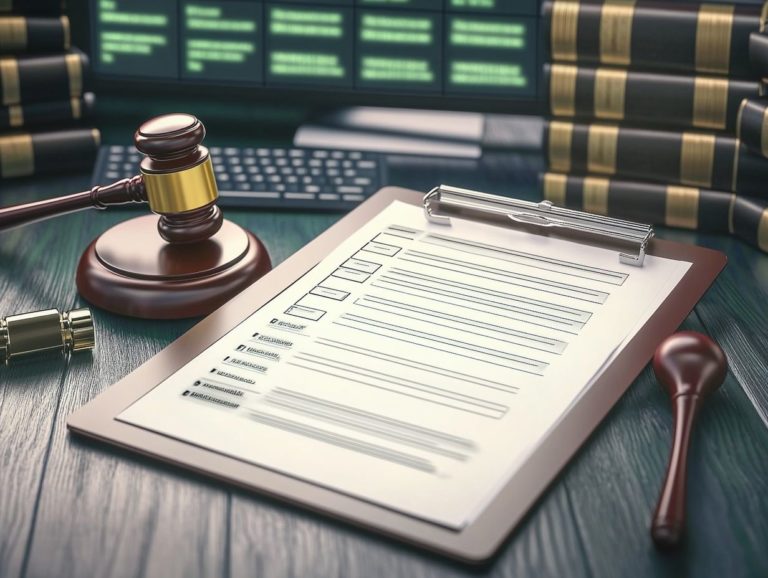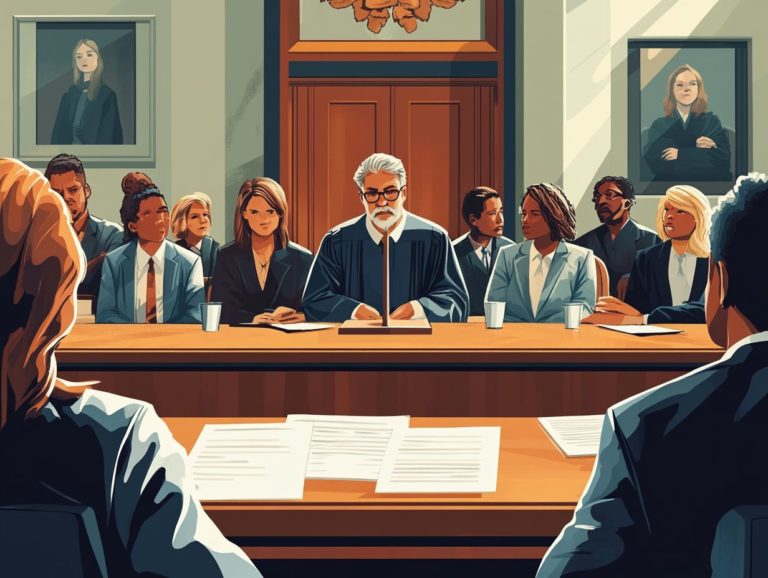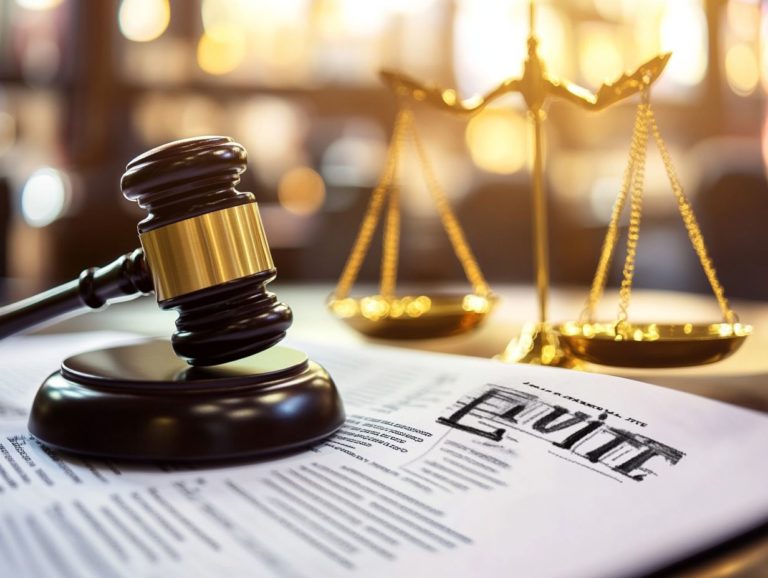The Challenges of Cross-Border IP Litigation
Navigating the complex landscape of cross-border intellectual property (IP) litigation presents a unique set of challenges for you as a business or legal practitioner.
From language and cultural barriers to differing legal systems, the hurdles can be quite daunting. Understanding these challenges is essential, as is crafting effective strategies to overcome them like fostering communication and leveraging international treaties.
Recent developments, including the influences of globalization and emerging technologies, are reshaping how IP disputes are managed. This article delves into these issues, providing insights that will better equip you as a stakeholder in this evolving arena.
Contents
- Key Takeaways:
- Defining Cross-Border IP Litigation
- Challenges Faced in Cross-Border IP Litigation
- Strategies for Overcoming Challenges
- Recent Developments in Cross-Border IP Litigation
- Frequently Asked Questions
- What is cross-border IP litigation?
- What are the challenges of cross-border IP litigation?
- How do differences in legal systems impact cross-border IP litigation?
- What are some challenges related to language barriers in cross-border IP litigation?
- How do cultural differences affect cross-border IP litigation?
- How can businesses prepare for the challenges of cross-border IP litigation?
Key Takeaways:
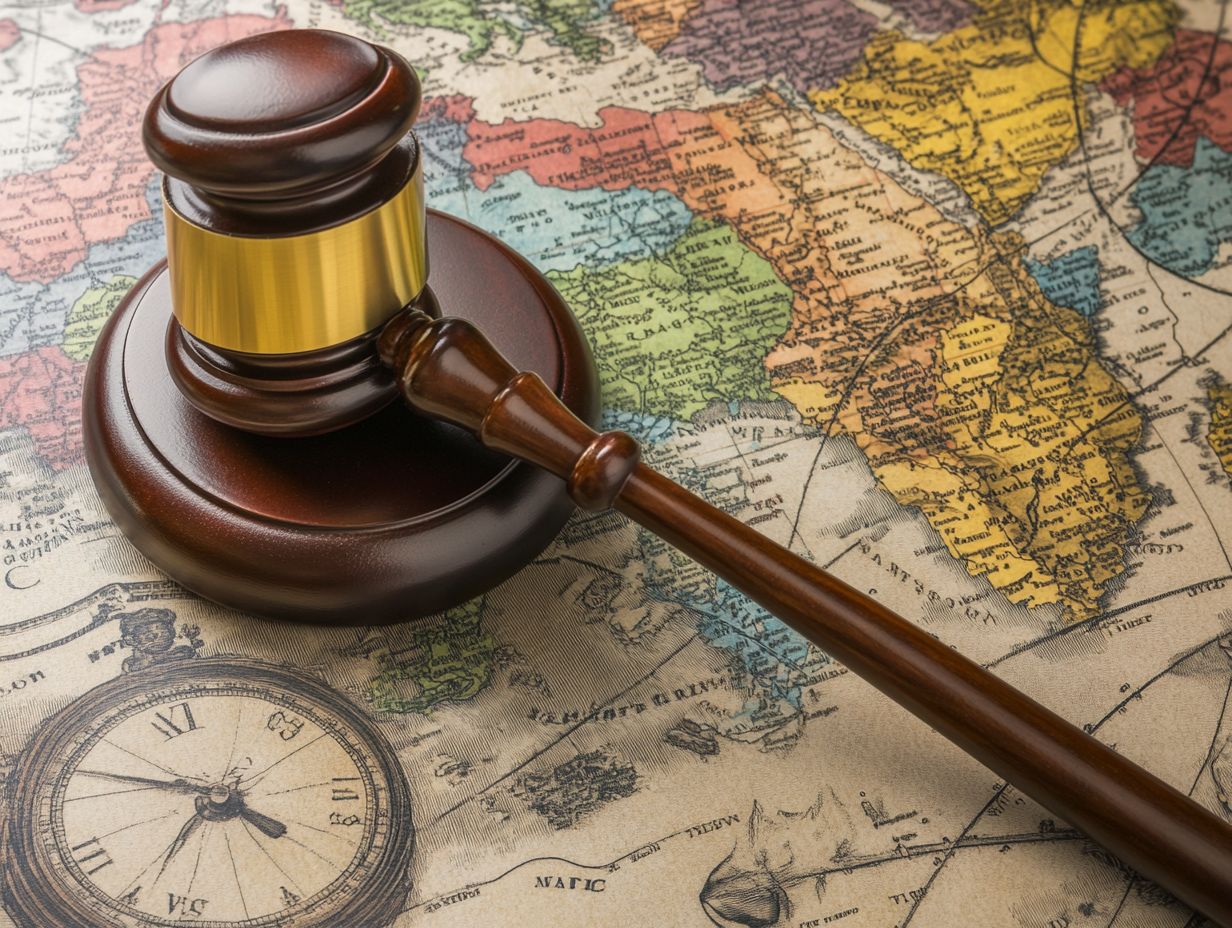
Overcome language and cultural barriers in cross-border IP litigation by implementing effective communication strategies, as highlighted in the importance of IP education in litigation.
Address differences in legal systems for smoother enforcement of judgments in cross-border IP litigation by utilizing international treaties and expert legal representation.
Adapt to the impacts of globalization and emerging technologies, emphasizing the need for innovative strategies in cross-border IP litigation.
Defining Cross-Border IP Litigation
Cross-border IP litigation involves the legal challenges you face when enforcing intellectual property rights across national borders. It intricately weaves together various legal frameworks and international treaties, including the TRIPS Agreement and the role of international law in IP litigation as well as the Berne Convention.
This type of litigation addresses issues related to copyright and patent enforcement, underscoring the significant role of organizations like the World Intellectual Property Organization (WIPO) in setting global standards.
As you expand your business into the global market, understanding the complexities of cross-border disputes becomes essential for safeguarding your creative assets and ensuring compliance with diverse legal systems. This landscape presents both opportunities and challenges that require your careful navigation.
Challenges Faced in Cross-Border IP Litigation
Cross-border IP litigation presents various challenges that demand your attention. For instance, the challenges of IP law in the age of globalization highlight how infringement issues can arise due to differences in legal systems across jurisdictions.
Each country boasts its own unique legal framework, complicating copyright protection and patent enforcement. As a result, you must skillfully navigate a maze of regulations and standards.
Local authorities often interpret intellectual property laws differently, which can lead to potential conflicts and misunderstandings in cross-border disputes.
Language and Cultural Barriers
Language and cultural barriers significantly impact cross-border IP litigation, often complicating your communication and understanding of legal frameworks. Understanding the role of the internet in IP litigation can help navigate these hurdles, which can lead to misinterpretations of contractual agreements and legal documents, ultimately shaping the outcome of cross-border disputes.
Understanding cultural nuances is vital for effective negotiation and resolution, as variations in legal practices can influence perceptions of intellectual property rights and their enforcement.
Consider a scenario where a U.S. company finds itself in a legal tussle with a Chinese firm over technology patents. Misunderstandings can easily arise from differing legal terminologies and cultural attitudes towards IP ownership. The American firm may lean heavily on exhaustive documentation, while the Chinese entity might prefer informal agreements rooted in personal relationships. This disconnect often leads to prolonged negotiations and delays in resolving disputes.
Engage bilingual legal professionals and cultural experts for effective communication. Their expertise can bridge the gap between different legal systems, ensuring everyone understands their rights and obligations clearly. This alignment paves the way for smoother and more efficient litigation processes.
Differences in Legal Systems
Legal systems differ across countries, impacting how you enforce your intellectual property rights. Understanding these differences is essential in the global market.
For example, the United States prioritizes strong patent protection with remedies like injunctions and damages. In contrast, China offers quick patent approvals but inconsistent enforcement.
If you’re entering the Chinese market, know that innovation and protection may not match your home country s standards.
European nations adopt a harmonized approach with regulations like the EU Copyright Directive. These differences shape your protection level and strategies as you compete globally.
Enforcement of Judgments
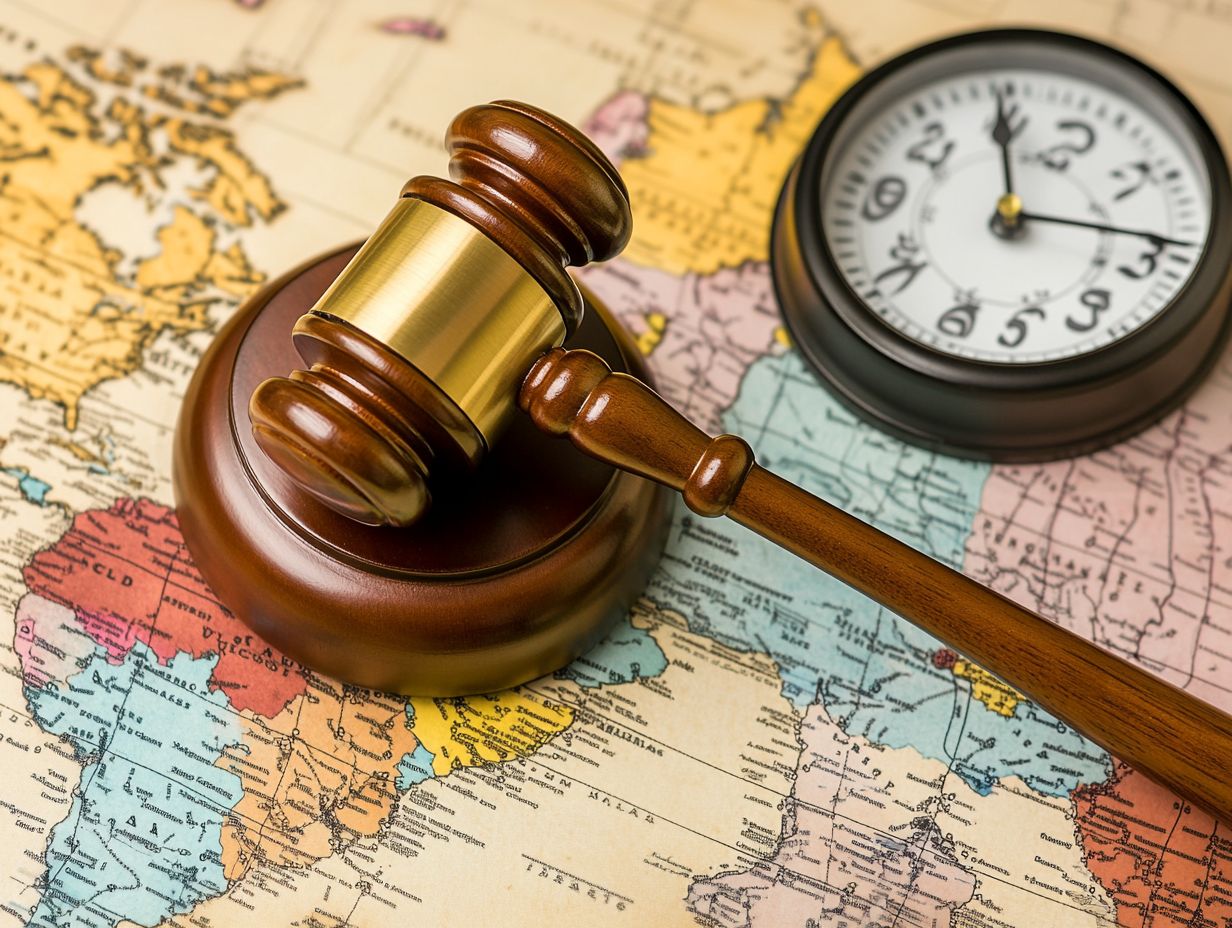
Enforcing judgments in cross-border IP cases can be tricky. Different legal systems often don’t recognize or enforce decisions from others, making it crucial to understand the future of IP litigation in a digital age.
This inconsistency creates hurdles in protecting your intellectual property on a global scale. Treaties like the Hague Convention aim to help but face practical challenges.
While the Hague Convention seeks to simplify processes, interpretations vary across countries. Regions with limited formal agreements, like parts of Asia or Africa, present even bigger obstacles.
The need for united international efforts to protect intellectual property is pressing. Judgments should be enforceable, regardless of where you are in the world.
Strategies for Overcoming Challenges
You need effective strategies to tackle cross-border IP litigation challenges. For insights on this topic, refer to the global landscape of IP litigation today. Strong communication and collaboration among legal professionals can enhance your understanding of enforcement complexities.
Get expert legal help to navigate the various legal frameworks. Educational programs can empower local authorities to improve their understanding of IP rights enforcement.
Effective Communication and Collaboration
Clear communication is vital. It helps everyone understand different legal frameworks and work together. This approach addresses infringement challenges and creates a more harmonious environment for negotiation and resolution.
Utilizing collaborative tools such as secure document-sharing platforms and real-time messaging applications can significantly enhance your workflow, especially when working with teams across different regions.
Successful cases have shown that joint strategy sessions via video conferencing can lead to swift resolutions, ultimately reducing both litigation time and costs.
By nurturing relationships through regular follow-ups and updates, you cultivate trust and facilitate the seamless exchange of crucial information.
Legal professionals who embrace these methods position themselves to navigate the intricate web of international legal standards, ensuring more favorable outcomes for their clients.
Utilizing International Treaties and Agreements
If you re involved in cross-border IP litigation, use international treaties. They provide critical guidelines for enforcing rights.
Treaties like the TRIPS Agreement and the Berne Convention present standardized protections that can streamline your litigation processes and reduce legal complexities. By leveraging these agreements, you can enhance your strategies for enforcing IP rights and significantly improve your chances of achieving favorable outcomes.
For example, the TRIPS Agreement requires member countries to uphold a minimum standard of IP protection, which facilitates smoother cross-border legal proceedings. Consider a multinational corporation that effectively used rules from the Berne Convention to safeguard its copyrighted material against infringement in another member country.
These treaties create a level playing field for businesses and provide effective avenues for dispute resolution, illustrating their immense value in nurturing a more predictable and secure global marketplace for intellectual property.
Expert Legal Representation
Finding expert legal representation is key. It helps you navigate cross-border IP litigation effectively. Specialized lawyers who grasp both local and international intellectual property laws can offer invaluable insights and strategies tailored specifically to your case.
Their expertise in enforcing IP rights, combined with their understanding of technology adaptation, gives them the power to advocate for you and tackle infringement challenges on a global scale.
Look for key qualities that can make or break your case, such as:
- a proven track record in similar cases,
- proficiency across various jurisdictions,
- strong negotiation skills.
For instance, a firm that has successfully represented technology companies in patent infringement disputes showcases its ability to handle complex legal arguments and navigate intricate international regulations.
These attributes not only bolster the chances of achieving a favorable outcome but also provide peace of mind in what can often feel like an intimidating legal environment. Ultimately, the right representation can be a game changer in disputes, safeguarding your valuable intellectual property and ensuring you maintain a strategic advantage in the global market.
Recent Developments in Cross-Border IP Litigation
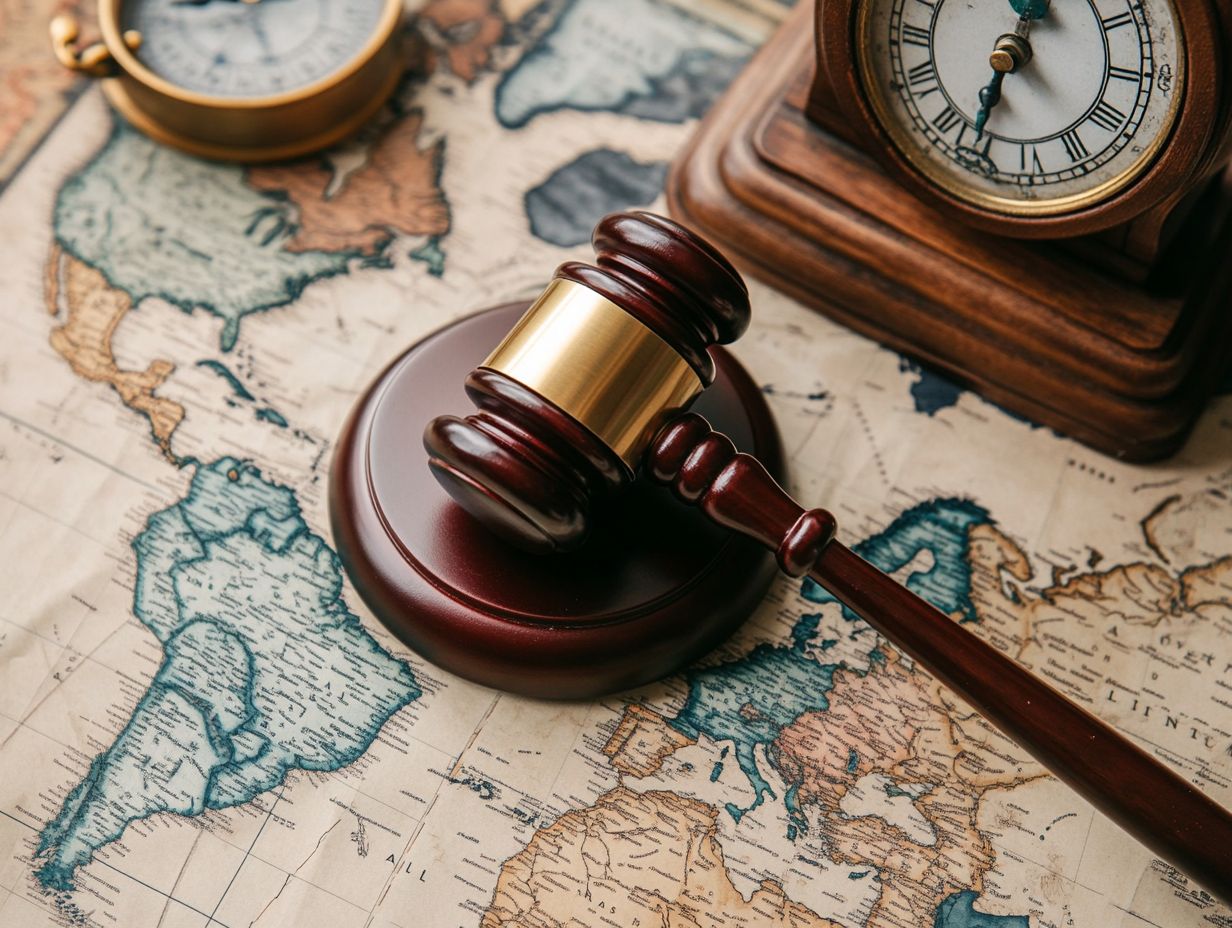
Globalization and new technologies are rapidly changing cross-border IP litigation. This dynamic interplay has introduced a myriad of opportunities and challenges within the sphere of intellectual property rights, particularly regarding the legal framework governing IP litigation.
As your business expands its reach globally, the necessity for resilient legal frameworks that can adapt to these technological advancements becomes crucial. This evolving landscape of IP disputes now calls for innovative solutions that can effectively navigate the complexities you face.
Stay informed about these developments to protect your IP rights effectively.
Impact of Globalization on IP Litigation
Globalization has significantly transformed cross-border IP litigation, reshaping how you perceive and enforce the creative works and inventions that people own across different jurisdictions.
As your company grows globally, expect to face many cross-border disputes that require a keen understanding of diverse legal frameworks and the unique nuances of various countries’ intellectual property laws.
This connected world opens up opportunities for market expansion while presenting challenges in maintaining consistent enforcement of IP rights.
For instance, if you re a technology firm operating in multiple countries, you might find yourself facing patent infringement claims in one jurisdiction while simultaneously dealing with copyright accusations in another.
Navigating these complexities often calls for tailored strategies, like securing international trademarks or leveraging treaties such as the Patent Cooperation Treaty (PCT), which simplifies obtaining patent protection across multiple countries.
Investing in legal expertise becomes essential as well, enabling you to grasp local IP laws and enforce your rights effectively.
This approach can help you conquer the global marketplace, even amidst the varying legal landscapes.
Emerging Technologies and IP Disputes
The rise of emerging technologies has sparked a surge in IP disputes, challenging existing legal frameworks and necessitating your adaptation in the realm of intellectual property rights.
With blockchain providing immutable records of ownership and artificial intelligence generating works that blur the lines of authorship, the task of protecting intellectual assets becomes increasingly complex.
For instance, disputes surrounding AI-generated art and music raise pivotal questions about who truly holds the rights to these creations serving as a wake-up call for legislators and stakeholders alike.
As digital rights management systems proliferate, you ll find that content creators and distributors must navigate a labyrinth of consent and licensing issues, complicating the landscape further.
The outcomes of these disputes have the potential to set significant precedents, influencing how rights are understood and enforced in this digital era.
Frequently Asked Questions
What is cross-border IP litigation?
Cross-border IP litigation refers to legal disputes involving intellectual property (IP) rights that arise between parties from different countries. Understanding the importance of IP due diligence in litigation is crucial, as these cases typically involve issues such as the infringement of patents, trademarks, or copyrights.
What are the challenges of cross-border IP litigation?
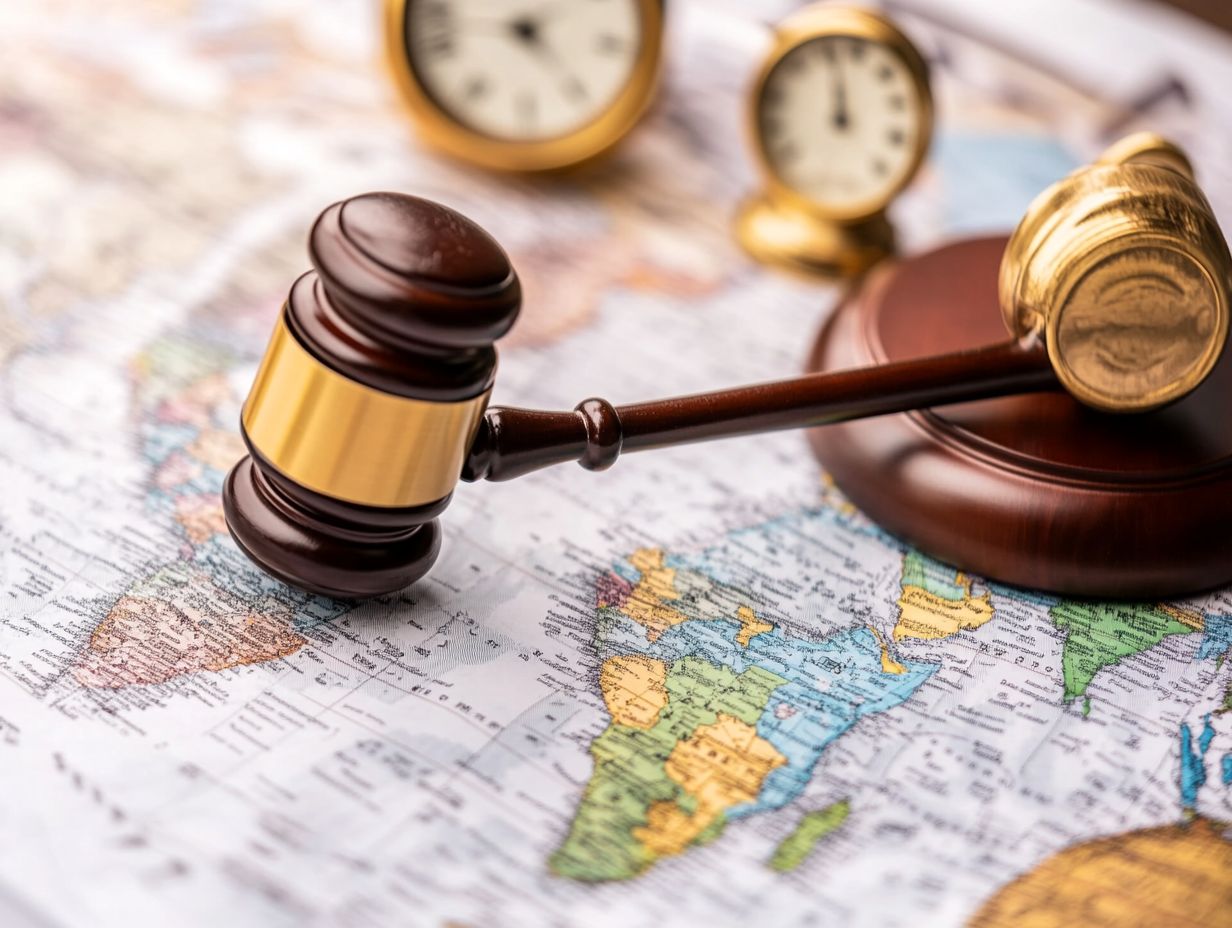
Some of the main challenges include differences in legal systems, language barriers, cultural differences, and varying levels of IP protection and enforcement. These factors can complicate navigating the legal landscape and can result in prolonged and costly litigation.
How do differences in legal systems impact cross-border IP litigation?
Each country has its own rules for IP disputes, which can complicate things. Laws and procedures for dealing with IP disputes can vary, making it difficult to determine which laws apply and how to proceed with a case.
Additionally, the interpretation and enforcement of IP laws may vary, leading to different outcomes in similar cases.
Language barriers can be a significant challenge, as legal documents, evidence, and communications may need to be translated.
This can lead to delays and potential misunderstandings, which may impact the outcome of a case. It is essential to work with experienced translators and legal professionals who are proficient in the relevant languages to mitigate these challenges.
How do cultural differences affect cross-border IP litigation?
Cultural differences can also impact cross-border IP litigation.
Different countries may have varying attitudes towards IP rights and may prioritize different aspects of the law. These differences can lead to misunderstandings and affect how a case is perceived and handled by the courts.
It is crucial to understand and navigate these cultural differences to effectively advocate for your rights in a cross-border IP litigation case.
How can businesses prepare for the challenges of cross-border IP litigation?
Businesses must team up with experienced intellectual property (IP) lawyers who specialize in international cases. Understanding the legal and cultural landscape of the countries involved is also crucial.
Make sure all necessary IP protections are in place before entering international markets. A strong IP strategy and proactive measures can significantly ease the challenges of lawsuits involving intellectual property across different countries.
Taking action now can protect your business and maximize your opportunities. Don’t wait prepare today!


